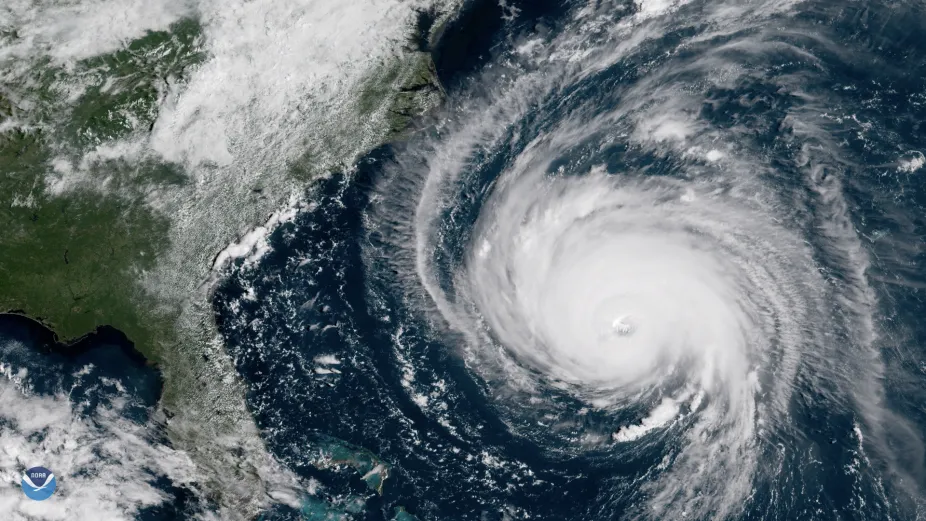All About Hurricanes
Hurricanes are huge storms. They can be hundreds of miles across and have wind speeds of 74 to 200 miles per hour (119-322 kph). Winds blow counterclockwise in hurricanes that are north of the equator and clockwise in hurricanes that are south of the equator.
Hurricanes form in the tropics.
Hurricanes form where the air is warm in the tropics. They start as weaker storms, called tropical storms, and grow stronger by collecting energy from warm ocean water. They travel over the ocean and then head out of the tropics to higher latitudes.

This is what a hurricane looks like from space. Do you see the clouds swirling? Do you see the eye of the storm at the center? This is Hurricane Florence, which traveled across the Atlantic and made landfall in North Carolina, United States, in 2018.
NOAA
Beware of the eye!
There’s an area at the center of a hurricane that isn’t stormy at all. It’s called the eye. When the eye is passing over a location, it can seem like the stormy weather is over, but it’s not. The other half of the storm will be passing through soon. The strongest winds of the storm are usually in the area right next to the eye.
When do hurricanes happen?
Hurricanes form when ocean water is warmest. In the Atlantic, hurricane season is over the summer and fall - from June 1 to November 30 each year. Our warming climate is causing the ocean surface to warm, which might make hurricane season longer.
This video is a part of Animated Atmosphere, a suite of short videos produced by the UCAR Center for Science Education with FableVision Studios.